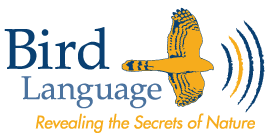 Observation is at the heart of Jon Young’s “What the Robin Knows,” which finds its wonders closer to home. Despite its humble title and slim size, it is no less ambitious than “Bird Sense,” promising that backyard bird observation can, in the words of the subtitle, “reveal the secrets of the natural world.”
Observation is at the heart of Jon Young’s “What the Robin Knows,” which finds its wonders closer to home. Despite its humble title and slim size, it is no less ambitious than “Bird Sense,” promising that backyard bird observation can, in the words of the subtitle, “reveal the secrets of the natural world.”
It is a tribute to the author’s boyish enthusiasm and invigorating, if occasionally hyperbolic, blend of tracking skills and modern field ecology that he persuades you that you really can learn what he calls “deep bird language.” This involves mastering the multiple alarm calls that common birds make, understanding the calibrations of concern that each one represents and adding in a basic grasp of the body language of birds—not only as individuals but as a system of multiple species interacting in your backyard or in the woods. Learn all this and, voilà, you can say casually to your friends, “A cat’s coming. Look!” and they will stare in amazement a few moments later as one shows up.
I do not know whether Mr. Young, as he claims, really can predict from the birds whether a backyard intruder will turn out to be a dog or a cat or, if it is a cat, whether it is a cat familiar to the birds or not, any more than I can know for certain to what degree these are “native” methods, as he claims, passed on to him from his own mentor, who got them from his Native American grandfather. But there is so much delicacy of observation in Mr. Young’s book, so much expertise and intimacy with nature and so much common sense, that, to be honest, it didn’t much matter to me, especially when I field-tested his recommendations with one of my daughters.
In half an hour of watching—the minimum he recommends at a “sit spot,” since you need to allow the disturbed wildlife to return to its “baseline”—we were able to recognize many of the charmingly named bird behaviors he describes: the “sentinel” perched high while other birds, and species, foraged below; the “hook,” in which an alarmed but not overly concerned bird flies off and then back to a higher spot; the “bird plow,” when an intruder (in this case us) drives a whole range of birds before it.
What makes the approach of “What the Robin Knows” so refreshing is that it borrows back into bird-watching something the practice often surrenders to birders, those single-minded stalkers who identify and then abandon individual birds with promiscuous fury. My daughter has little interest in my fits of avian acquisitiveness, but sitting quietly in the woods, taking in the whole system as a sort of babbling classroom whose sounds and silences all communicate something important, she was mesmerized—and so was I. This, more than anything else, is what bird-watching ought to mean.
—Mr. Rosen is the editorial director of Nextbook and the author, most recently, of “The Life of the Skies: Birding at the End of Nature.”
